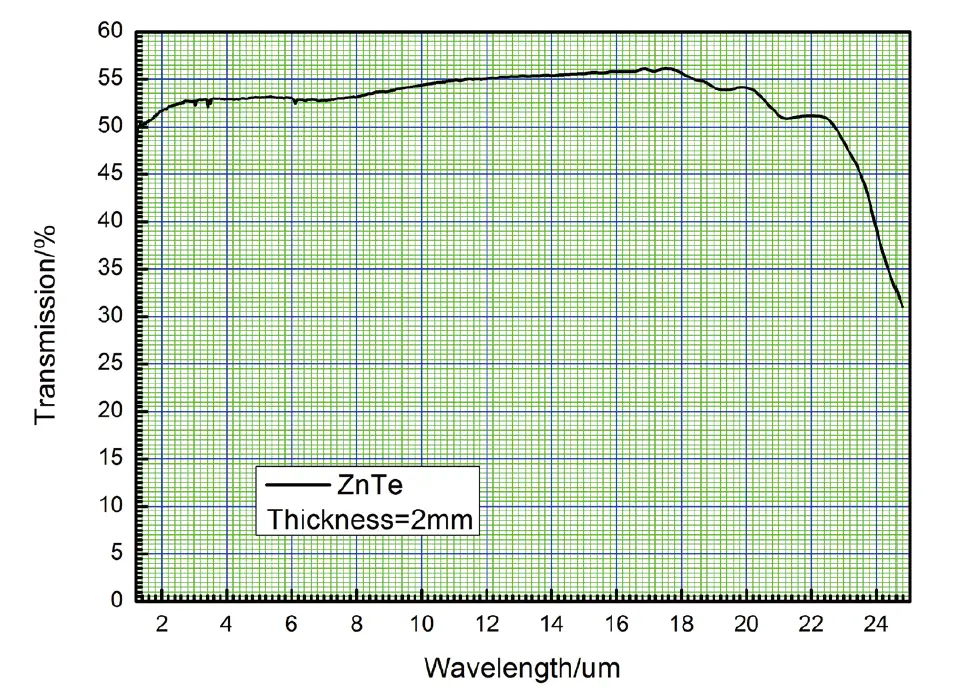Zinc Telluride (ZnTe) is a direct-bandgap II-VI compound semiconductor material with a cubic zinc blende crystal structure. It is an ideal electro-optic crystal widely utilized in terahertz (THz) wave generation and detection due to its exceptional optical and electronic properties. With a wide range of applications, ZnTe crystals boast high transmission efficiency in the mid-infrared (7-12 μm) and visible spectrum.
The crystal’s intrinsic qualities include a high electro-optic coefficient, moderate birefringence, and excellent purity levels that contribute to its performance in high-power and ultrafast laser systems. Its compact lattice structure ensures low defect density, making it a reliable choice for industrial-grade THz imaging and spectroscopy applications. Furthermore, ZnTe’s ability to support ultra-thin and large-area production makes it a versatile option for demanding optical setups.
ZnTe crystals are extensively utilized in a variety of high-performance optical and electronic fields:
| Property | Value |
|---|---|
| Crystal Structure | Cubic Zinc Blende |
| Lattice Constant | a = 6.1034 nm |
| Density | 5.633 g/cm³ |
| Bandgap | 2.26 eV |
| Transparency Range | 7-12 μm |
| Transmission Efficiency | 60% (7-12 μm) |
| Refractive Index | n (λ=10.6 μm) = 2.7 |
| Electro-Optic Coefficient | y41 = 4.0 pm/V |
| Electrical Resistivity | Low: <10³ Ω·cm, High: >10⁹ Ω·cm |
| Wavelength (λ) | Refractive Index (n) | Transparency (%) | Electro-Optic Efficiency |
|---|---|---|---|
| 7 μm | 2.8 | 60% | High |
| 10.6 μm | 2.7 | 55% | High |
| 12 μm | 2.6 | 50% | Moderate |
| Specification | Parameter |
|---|---|
| Aperture Size | Up to 30 × 30 mm |
| Minimum Thickness | 0.01 mm |
| Crystal Orientation | [100] or [111] |
| Surface Flatness | <λ/10 |
| Surface Roughness | Ra < 0.01 nm |
ZnTe Crystals are typically delivered uncoated to preserve their surface integrity. Anti-reflective coatings are available upon request depending on application-specific requirements.

| Clear Aperture | Thickness | Orientation | Coating | Price (USD) | Customization Available |
|---|---|---|---|---|---|
| 30 × 30 mm | 0.5 mm | [100] | Uncoated | $2,500 | Yes |
| 20 × 20 mm | 1.0 mm | [111] | Uncoated | $2,000 | Yes |
| 15 × 15 mm | 2.0 mm | [100] | Uncoated | $1,500 | Yes |